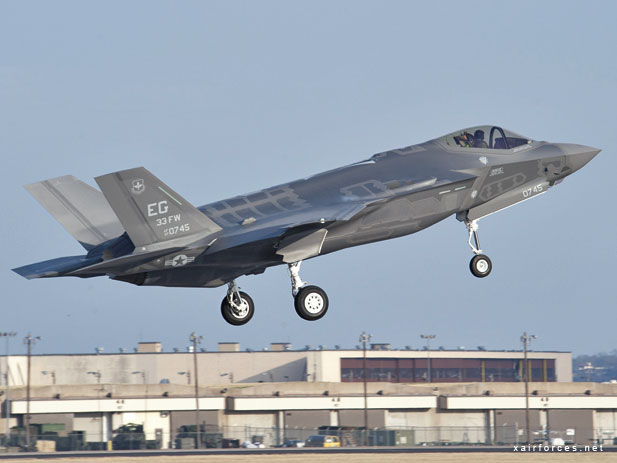
Power failure investigation continues for F-35

US government officials cleared seven of 10 Lockheed Martin F-35 test aircraft to fly five days after a power outage and oil leak forced the AF-4 vehicle to land on 9 March.
But the full costs of the programme's most serious in-flight incident in nearly four years remain unclear. Six of the seven cleared test aircraft had returned to flight by 16 March. Three of the latest test aircraft to roll off Lockheed Martin's assembly line and both production aircraft delivered to date remain grounded indefinitely while the investigation of the incident continues.
The root cause of the generator malfunction remains under investigation within the programme, but officials decline to offer any clues of the failure or details about the difference between the older and newer generators.
It is also not clear if the AF-4 pilot was manoeuvring aggressively at the time of the power black-out.
Since the F-35 design relies on electricity instead of hydraulics to power flight-control surfaces, a dual-generator failure is a critical safety issue. By design, the F-35's electric system has a third back-up - Honeywell's integrated power pack - which kicked in and allowed the pilot to land safely.
For the test fleet, the difference between airworthy and grounded depends on a vital component weighing only 56.7kg (125lb) and occupying a volume of 0.04m³ (1.69ft³), according to US Navy acquisition documents.
Airworthy aircraft are powered by an older version of the F-35's dual-redundant Hamilton Sundstrand electric starter-generators.
The grounded aircraft, which include the conventional take-off and landing AF-4, short take-off and landing BF-5, carrier-based CF-1 and production models AF-6 and AF-7, are powered by an updated version made by Hamilton Sundstrand called the alternate electric starter generators.
Source: By Stephen Trimble
17/03/11 - Flight International
Photo:
Second F-35 Production Jet Takes First Flight
FORT WORTH, Texas, March 7th, 2011 -- AF-7, the second F-35 Lightning II production jet, takes off on its first flight Friday, March 4, from Naval Air Station Fort Worth Joint Reserve Base. The F-35A conventional takeoff and landing variant flew for 1.3 hours. AF-7 is the second and final aircraft from Low Rate Initial Production lot 1. The first, AF-6, flew for the first time a week earlier. [Lockheed Martin]
(17.03.2011)
|